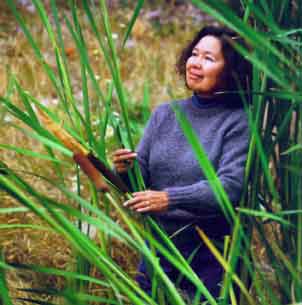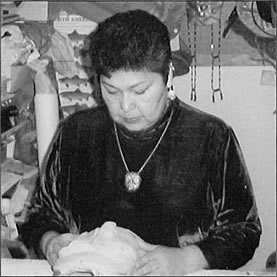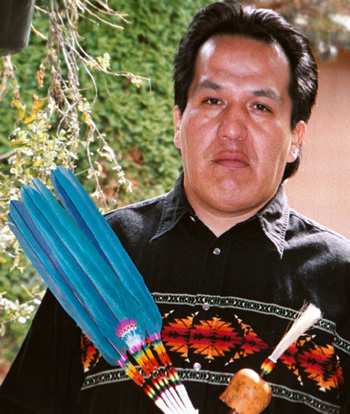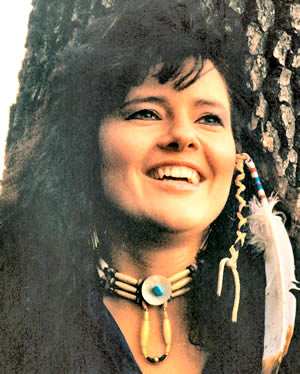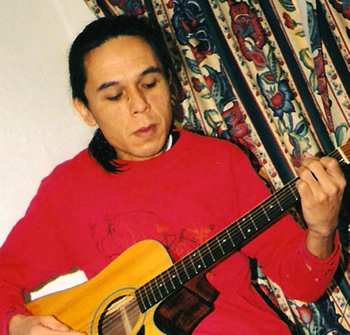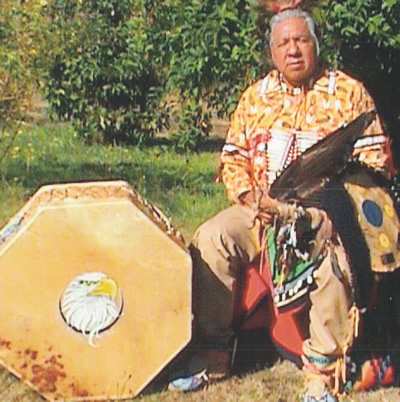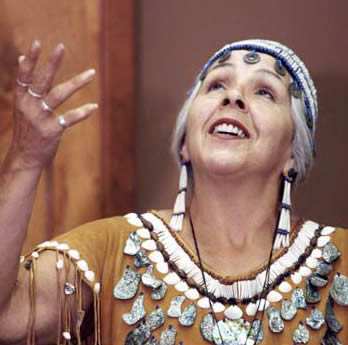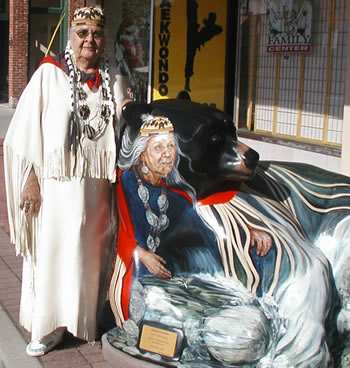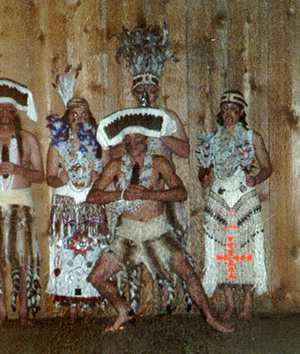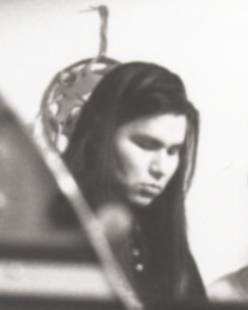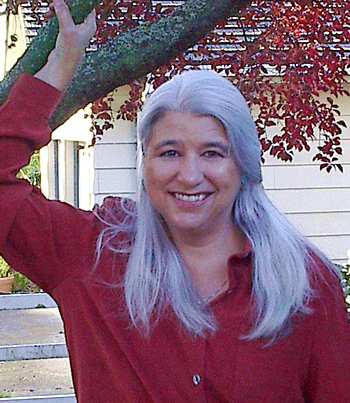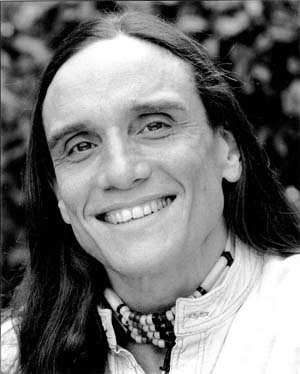Oregon Storytellers
Pat Courtney Gold (Wasco)
My maiden name is Courtney and I was born and raised on the Warm Springs Reservation. The Wasco people were known for fishing and for trading. The salmon runs produced enough fish for us so that each family could catch hundreds and hundreds of pounds. We would dry this and then we would trade. The baskets were important because those were our containers. We would catch the salmon, filet them, dry them and sell them as filets or we would pound the filets into a powder salmon-like pemmican. That’s what we traded.
Lillian Pitt
My name is Lillian Pitt and my Indian name is Wakamu and my ancestry on the BIA papers is Warm Springs, Wasco, and Yakama. The memories of the elders are very special because they are the last of the quote-unquote traditional type of people who saw Celilo when it was a regular fishing place, who spoke only their Indian language, and who dressed the way they dressed.
Gerald Primeaux
Gerald Primeaux Senior, I am a Huntawa Lakota from the Yankton Sioux Reservation. My name is Chactawa which means Twin Eagle Boy. I was born in 1963 in Yankton, South Dakota, my dad was Asa Primeaux Senior. His dad, my grampa, was Harry Primeaux Senior. My great grandfather was Mitchell Primeaux and his dad was Ed Primeaux, that was on my dad’s side. My mom’s side, we come from the Rainbow Tiyospaye, Rainbow side. My mom was Loretta Charity Rainbow and her dad Harry Rainbow and then his dad was a medicine man just went by the name of Rainbow in our, among our people, that’s where we come from. They call us the Yankton Sioux, the land of the friendly people, you know, that’s where I’m from, that’s where I come fro
John Bevis
My Indian name is Mowitit, which comes from my grandmother’s side the Barnhardt side. Born and raised on the Umatilla Reservation. I was exposed to a lot of cultures. My uncle used to tell me a lot of stories about horses and things like that. My mother used to tell me power stories about my grandmother. My grandmother was one of the last Indian doctors on our reservation. Powerful lady. I remember being a young boy and witnessing her power – naïve young fellow growing up – pretty powerful things to see. She was a devoutly religious lady as she got older.
Nico Wind
Nico Wind Cordova, is Assiniboine/Ojibwa. The Assiniboine people were known as “the people who cook with stones.” They were woodland peoples, a nomadic Nakota tribe that traveled with their dogs and horses throughout the northern plains and up into Canada. The Ojibwa were located in eastern Canada and the Great Lakes region.
Spider Mocassin
Residing in Portland, Oregon, Marcus Kevin Moseley better known, as Spider Moccasin is Wasco and Warm Springs and is enrolled in the Warm Springs Reservation. The Wasco were located in the Columbia River Gorge near the famous Celilo Falls until the treaty of 1855 relocated them to central Oregon on the Warm Springs Reservation. There are mountains, open plains, plateau basins and deep canyons carved and etched out of volcanic rock that the Warm Springs Tribe now shares with the Paiute and Wasco tribes in a confederacy. Spider’s mother, Rosella Leonard, is a well-known and respected Native Rights professional and their family, the Smith Clan, is involved with NW Tribal government.
Vernon Kennedy
Hi, this is Vernon Kennedy, Paiute from the Burns Paiute tribe. I’d like to share this coyote story. Coyote was with Esha who was going to be in a fight. As Esha was getting ready he told his brother don’t watch me even though you hear a lot of fighting. Don’t even peek. Coyote could not stand looking at his brother. He heard the fighting outside the tipi and decided to peek through a little crack.
Carlos Calica
Hello, my name is Carlos Calica. I come from the Confederate Tribes of Warm Springs. I was asked to come here to share today on the Tribal Rhythms program on Native American drumming and the history of the drumming and singing of the Warm Springs tribes. I am very fortunate to be asked to do this and very honored for my family and my community and people here in Warm Springs as well as people across the United States who share their wisdom and what they’ve been taught as far as the singing and traditional and cultural values that they have and share with one another.
Esther Stutzman
My name is Esther Stutzman and I am Kalapuya and Coos. I would like to talk about the beginnings of the Kalapuya people. One of the stories that I heard from my relatives was about the beginning and how it all came to be.
You see, the world was made of stone. There were stone mountains and stone valleys. At the very top of the stone mountain something came to life, and that life became known as Le-lu, First Woman, who walked down from that stone mountain with two babies clutched to her breast. As she walked, with every step she took the grass began to grow. And as she sat and as she touched the ground, the rivers began to flow.
Agnes Baker-Pilgrim
I’m Agnes Baker-Pilgrim, a registered elder of the Confederated Tribes of Siletz Indians, and a granddaughter of Chief George Harney, the first elected chief of the Siletz Nation. I live in Grants Pass, Oregon. I came from a family of nine children. I was the third from the last child, born September 11, 1924, near headwaters of the Siletz River at Logsden, Oregon. All of my siblings and parents are all gone and it’s just left me now of my family.
Eddie Ehret
Today my name holds no relevance because I am just a man, but I will tell you that I am a Siletz Indian, and that the Siletz Indians are a confederated tribe made up of twenty-seven different bands of tribes. I myself am part Kalapuya, Chetko, Tillamook and Talowa, to name a few. However, in the native community there are more than five hundred different nations, and more than five hundred different ways to do the same thing, such as pray.
Elaine LaBonte
Hello, my name is Elaine LaBonte. I’m from the Confederated Tribes of Grand Ronde, which is in northwestern Oregon. I’m going to talk about the history of the Confederated Tribes, which we originally had over thirteen and a half million acres of the homeland from the Oregon-California border up to the south bank of the Columbia River, between the two large mountain ranges—the Coastal and the Cascade Mountain Ranges.
Trevino Brings Plenty
Hi, my name is Trevino Brings Plenty. I am member of the Minneconjou Lakota. I was born on the Cheyenne River/Sioux Reservation in South Dakota, Eagle Butte, South Dakota. I now live in Portland, Oregon. I’ve been here for about twelve years. I’m a poet and a musician. I’ve been doing both for about twelve years.
Karen Kitchen
Hello, my name is Karen Kitchen and I’m a member of the Osage Nation of Oklahoma. I grew up in Oklahoma, but I’ve lived here in Oregon since the early 1980s. I work as an educator and a musician. I’ve worked for Portland public schools for many many years and for the last 10 yrs I have been at the Indian Education Program, which is a Title VII program. I have the wonderful opportunity to work with American Indians, Alaskan natives, students, and their families – grades K-12 – although primarily my focus is high school and making sure that the students get all the credits they need and successfully complete high school and move on and hopefully go to college or some kind of great career path. Also, I get to teach music – particularly Native songs to children ages 3-5 that go to our Native Montessori program. That’s been a real delightful new aspect of my work here at Indian Ed.
Robert Greygrass
My name in English is Robert and my Lakota name is Tagniokikpeensi. I’m Lakota, talagee, French and Irish. I’m a storyteller and a singer. I’ve been recognized by many different elders from many different tribes and given their blessing to go and talk to the two-leggeds – the people. That’s why I’m talking with you today to share cultural knowledge, spiritual knowledge, and stories that are fun and entertaining as well as full of lessons and teachings about how we should live as human beings on Mother Earth.

